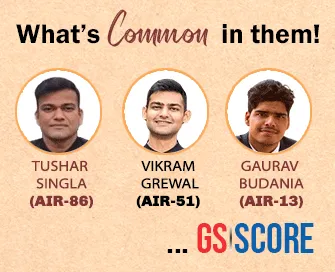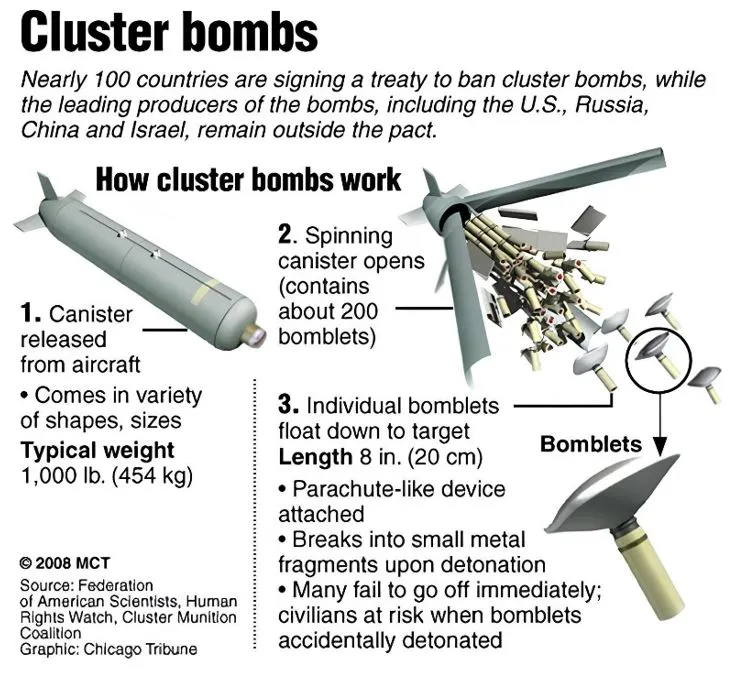

26th June 2025 (28 Topics)
Context
Iran fired a missile containing a cluster bomb warhead at Israel, marking the first confirmed use of such controversial weapons in the current conflict. This has renewed global concerns about the humanitarian risks associated with cluster munitions.
What are Cluster Bombs?
- A cluster bomb is a large weapon designed to scatter multiple smaller explosives (called submunitions or bomblets) over a wide area.
- It explodes mid-air, releasing dozens of bomblets.
- These bomblets fall to the ground and explode on impact — but many often fail to detonate, posing long-term threats.
- In this case, Iran’s missile exploded about 7 km above ground, spreading nearly 20 submunitions across an 8-km radius in central Israel.
- They are banned under the 2008 Convention on Cluster Munitions.
- 111 countries and 12 entities have signed the treaty. But Iran, Israel, the US, Russia, China, and others have not signed.
- Indiscriminate Impact: These bombs can’t differentiate between military targets and civilians.
- Unexploded Ordnance (UXO): Many bomblets remain active after falling, causing accidental injuries or deaths long after a conflict ends.
- These bombs are banned under the 2008 Convention on Cluster Munitions.
- 111 countries and 12 entities have signed the treaty. But Iran, Israel, the US, Russia, China, and others have not signed.



